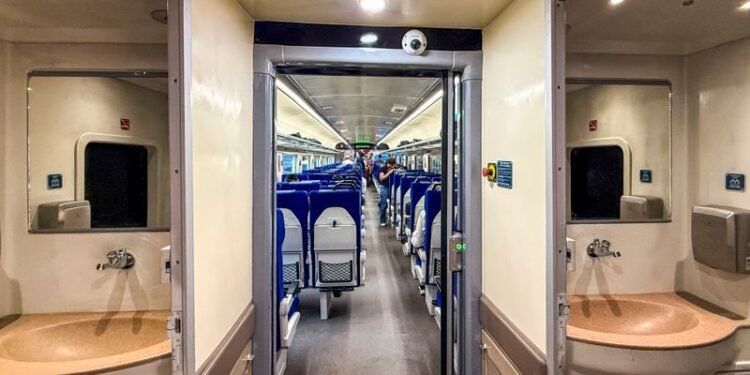Designed specifically for the harsh climate and unique terrain of the Valley, this winter-hardened variant is packed with custom innovations that make it unlike any other Vande Bharat train in the nation.
While the sleek design, high speed and modern amenities remain consistent, it’s what lies beneath the surface that truly sets the Kashmir edition apart.
One of the most critical upgrades is the inclusion of silicon heating pads under water tanks and bio-toilets, preventing freezing and ensuring functionality even in sub-zero conditions.
“These pads come with overheat protection sensors, adding an extra layer of safety,” a senior Railway official told The Tribune.
The plumbing system, often vulnerable in cold weather, now includes self-regulating heated pipelines and an auto-drain mechanism to avoid ice blockages when the train is idle.
Passenger comfort hasn’t been overlooked either.
Indian-style toilets are heated, and HVAC ducts have been extended to lavatories to maintain a warm environment throughout the train.
“Even the driver’s front windshield is embedded with heating elements, ensuring visibility in snow and fog. Anti-spall protection on the driver’s side adds another safety measure for extreme conditions, while a heated air dryer system keeps the braking system fully functional no matter the temperature.
In essence, while most Vande Bharat trains are built for speed, comfort and efficiency, the Kashmir version adds a fourth defining feature: resilience. It’s not just a symbol of progress, it’s a proof of Indian engineering rising to meet the nation’s most demanding challenges.



















